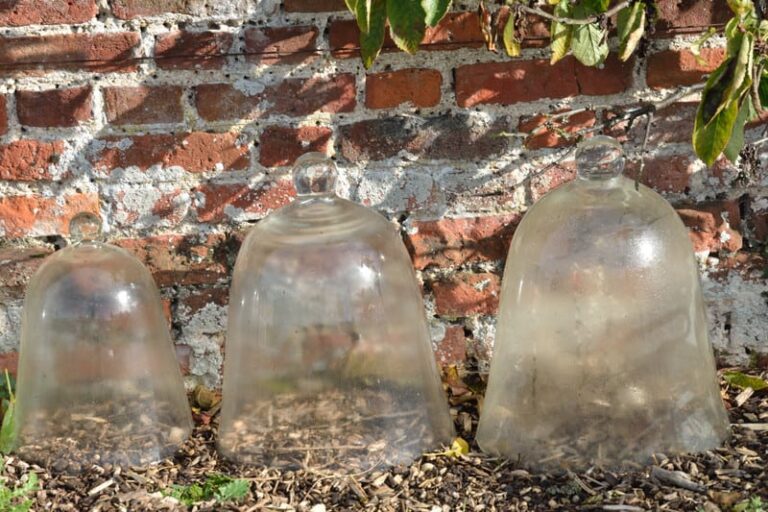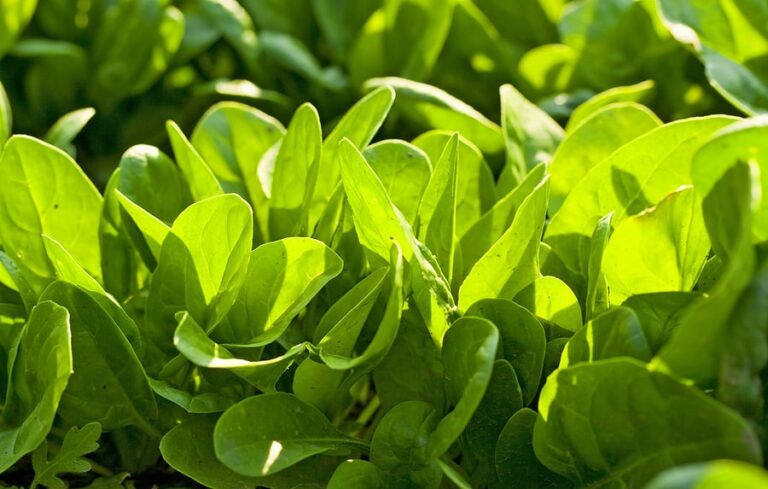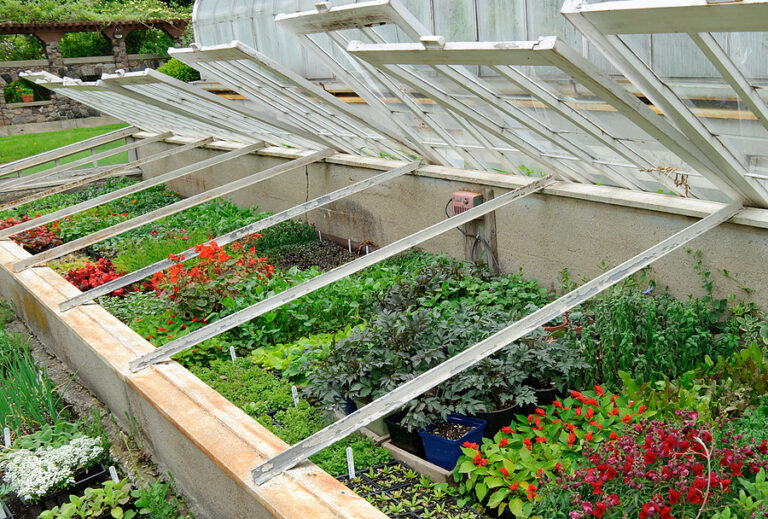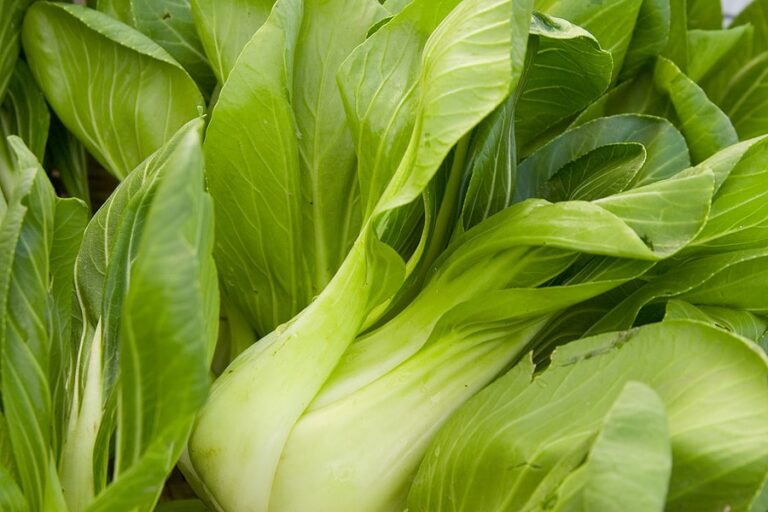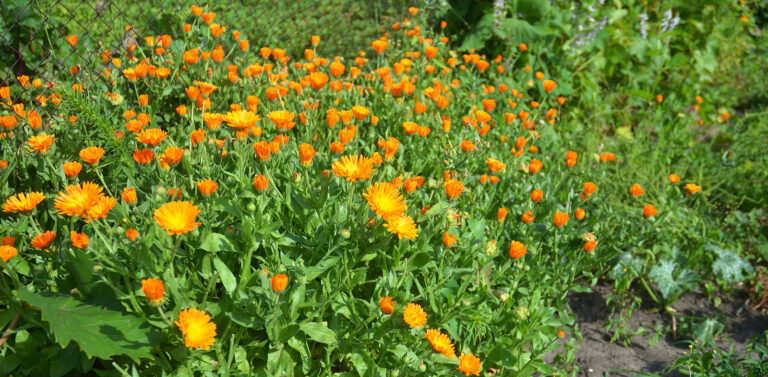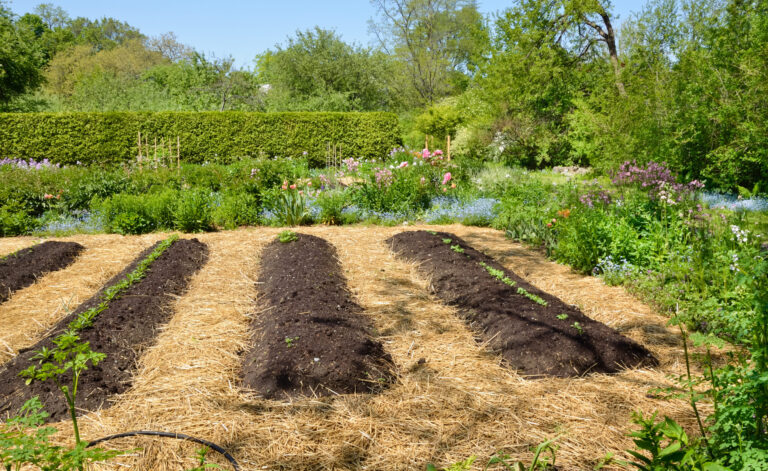Cloche to Protect Plants
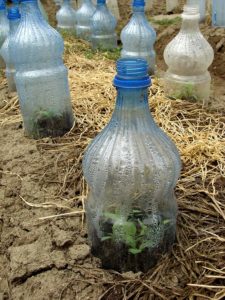 A cloche is a small, portable plant covering designed to be easily moved around the garden. A cloche traps the sun’s warmth raising the temperature of both the air and soil inside.
A cloche is a small, portable plant covering designed to be easily moved around the garden. A cloche traps the sun’s warmth raising the temperature of both the air and soil inside.
A cloche can cover a single plant or a small group of plants. You can use a cloche to protect a plant from an overnight frost or chilling winds. Cloches are commonly made of plastic or glass. A gallon milk jug with its bottom cut out can be used as a cloche.
Cloches are not a long-term solution to protecting plants. Because they are small they do not retain enough solar heat to sustain plants when temperatures fall below 40°F for more than a day. Conversely, because a cloche is small and has no venting other than lifting it away from the plant, the temperature inside a cloche can quickly overheat (the smaller the cloche the quicker it will overheat).
In late spring and early fall when the weather and temperatures are unsettled, the daily and nightly use of cloches may keep plants protected enough to add 2 to 4 weeks to your garden’s growing season.
Cloche is the French word for bell. The first garden cloches were bell-shaped glass jars or caps used by French vegetable growers in the nineteenth century. Today cloches come in many shapes and sizes and can be made out of glass or more commonly plastic. Cloches made out of paper are called hot kaps.
There are several types of cloches:
• Glass bell jars. Old-fashioned glass cloches are heavy and breakable.
• Plastic jugs and bottles. A one gallon plastic jug or a larger water bottle with the bottom removed can be used to keep light frosts off plants and keep seedlings warm in cool spring weather. The cap can be unscrewed for ventilation when temperatures rise. In cold weather loose mulch can be heaped up around the sides for extra protection.
• Tent and barn cloches. These are small, portable A-frame or box structures made of panes of glass or sheets of rigid plastic. They are commonly held together with springs, wires, or metal clips. They can be closed off on each end and adjusted for ventilation. Tent and barn cloches are commonly about 24 inches long and 9 to 18 inches tall. Open-ended tent and barn cloches can be lined up to protect a row of plants. Hinged rigid polyethylene tent and barn cloches are easily folded and moved or stored.
• Tunnel cloches. Similar to plastic tunnels, tunnel cloches can be made of rigid arched plastic or made of plastic sheeting, the same as plastic tunnels.
• Protective cylinders and teepees. These are made of wire mesh or fencing wrapped with polyethylene sheeting (4, 6, or 8 mil). A tomato cage wrapped in plastic sheeting can serve as a cylinder cloche. The commercially produced Wall O’Water made of hollow polyethylene tubes joined together and filled with water is a protective cylinder cloche.
(During the day, the water absorbs heat from the sun. The heat is slowly released at night. When the cylinders are gathered together they can protect plants to a temperature of 10°F.)
• Hot caps or hot kaps. These simple plant protectors can be made out of folded newspaper, wax paper, or paper bags. They are quick protection against light frosts but will not hold up against rain or irrigation.
Using a cloche. Set a cloche over any plant that may suffer as a result of cold temperatures or chilling winds. Ideally, a cloche should be set in place early enough in the day that it will capture the warming rays of the sun heating the air and soil inside. The slight rise in temperature is usually enough to protect plant tissue from a light freeze (a freeze of just a few hours).
If you intend to leave a cloche in place for longer than a day and temperatures are expected to warm significantly during the day, be sure to allow the cloche to vent. A milk jug cloche with its cap removed is an example of a vented cloche.


